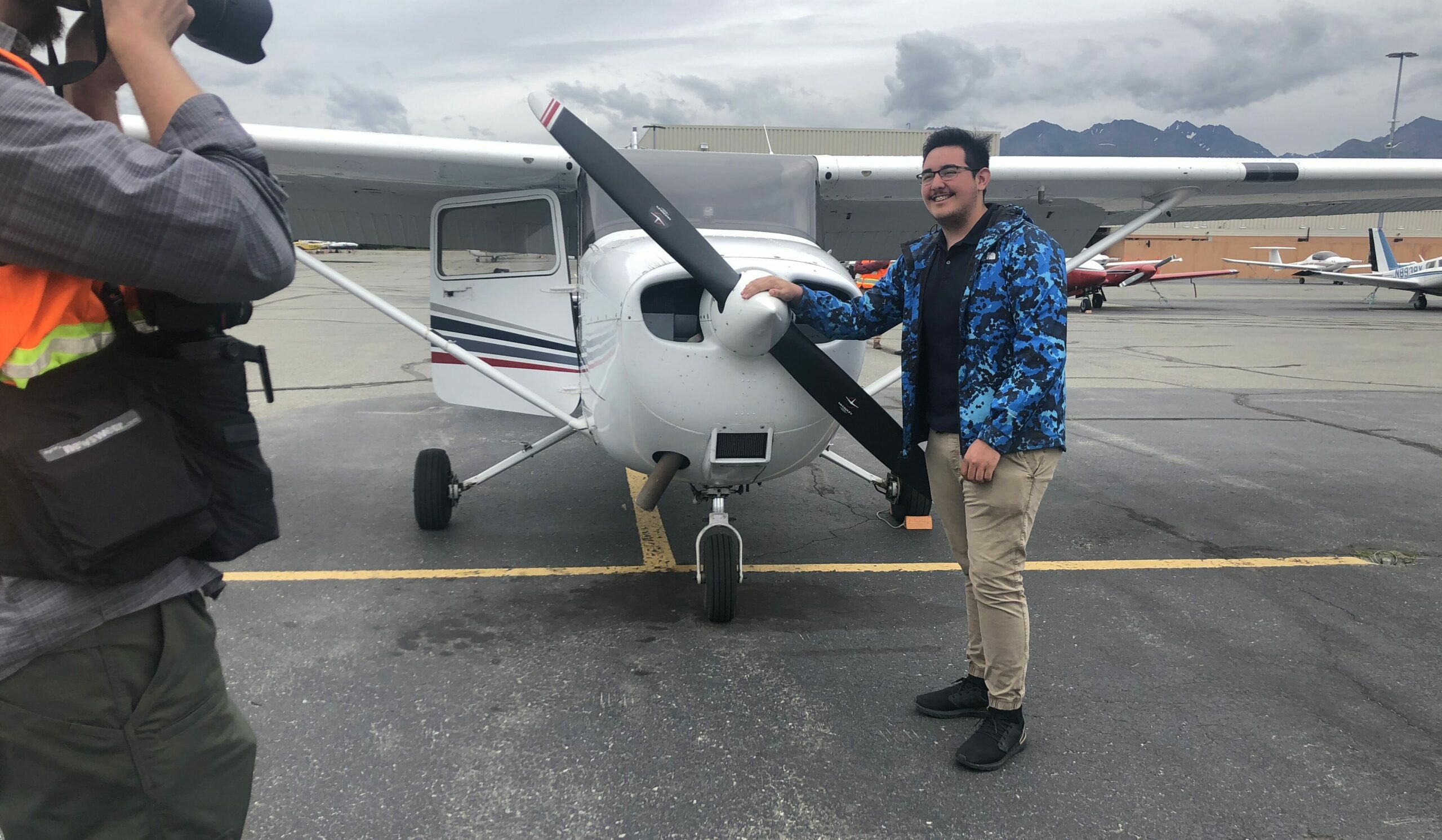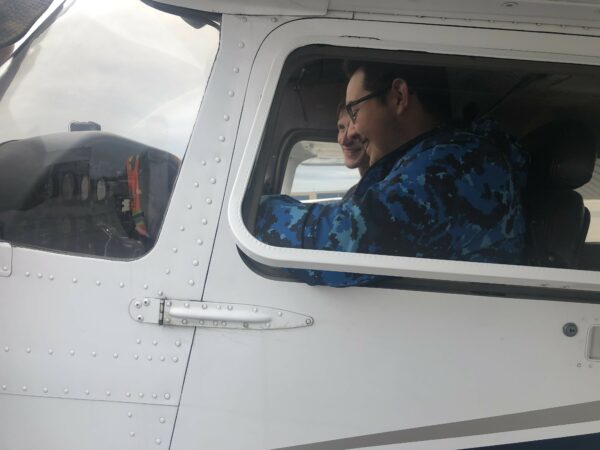
Ever since he was little, 18-year-old Roberto Zuñiga knew he wanted to be in the aviation industry.
Aviation is an appealing career path for many Alaska students, especially in a state where communities rely on airplanes for basic services. But it’s not always accessible.
Zuñiga said his mom works for an airline and always encouraged him.
“My plan was to get my private pilot (license) this summer, but I didn’t expect to get the scholarship. So, this is all just coming so fast. And we’re almost halfway through it!” he said.
After graduating from King Tech high in Anchorage, Zuñiga became part of the first cohort in a new partnership between the Anchorage School District and the University of Alaska Anchorage. It allows Zuñiga, and three other students, to move beyond the popular ground school aviation course the district offers, get in the cockpit, and learn how to fly.
Zuñiga is about two months away from getting his private pilot’s license through the program, and his family can’t wait for him to finish, he said.
“They’re definitely proud of me. Overall, they’re excited,” he said. “And they want me to get my license soon so that we can go fly.”
Previously, the ground school at King Tech gave students the education they needed to pass the Federal Aviation Administration knowledge exam, but students had to get the flight hours they needed for a license on their own.
The minimum age to get a private pilot’s license is 17, and the license requires at least 40 hours of flight time. With this new partnership with UAA, the district estimates students will average about 50 hours in the air.
Students receive dual credit for both high school and college through the program. The district pays for the flight time and the cost of UAA course credits.
According to the district, students in the program will save an average of $14,000, which is about the cost of a private license.
Raymond Weber is interim dean of the UAA community and technical college. He said many students are turned off at the cost and time commitment required to become a pilot.
“There are a lot of flight schools around here, but there’s an expense. There’s a lot of pathways, but it’s not always easy to get college credit for these things that goes towards a degree,” Weber said. “What we’ve done is really use this to take students that truly have an interest in flying, and give them the opportunity to accomplish this first step.”

It’s not uncommon for high schools and special programs across the country to offer a ground school or aviation technology pathway. Several use flight simulators to help students earn flight time. But just a handful offer actual flight time instruction like the new program at ASD and UAA.
Supporting students in their career goals is a priority for the Anchorage School District. Missy Fraze, ASD’s director for career and technical education said the district offers 24 programs.
“There’s quite a variety, all the way from agriculture to welding, from A to Z,” she said.
Fraze said the programs help connect students to careers that may not require a college degree or give them a head start on college courses.
“We want to help our students understand the opportunities right here in our state,” Fraze said. “Our aviation program and partnership is one of those that students who take our ground school can now transition from ground school into their flying and directly into UAA. We’re really creating that full pipeline from high school right into college for our students.”
Fraze said the district and university have been working on this partnership for two years and plan to continue to expand the program to further support students interested in aviation careers.




